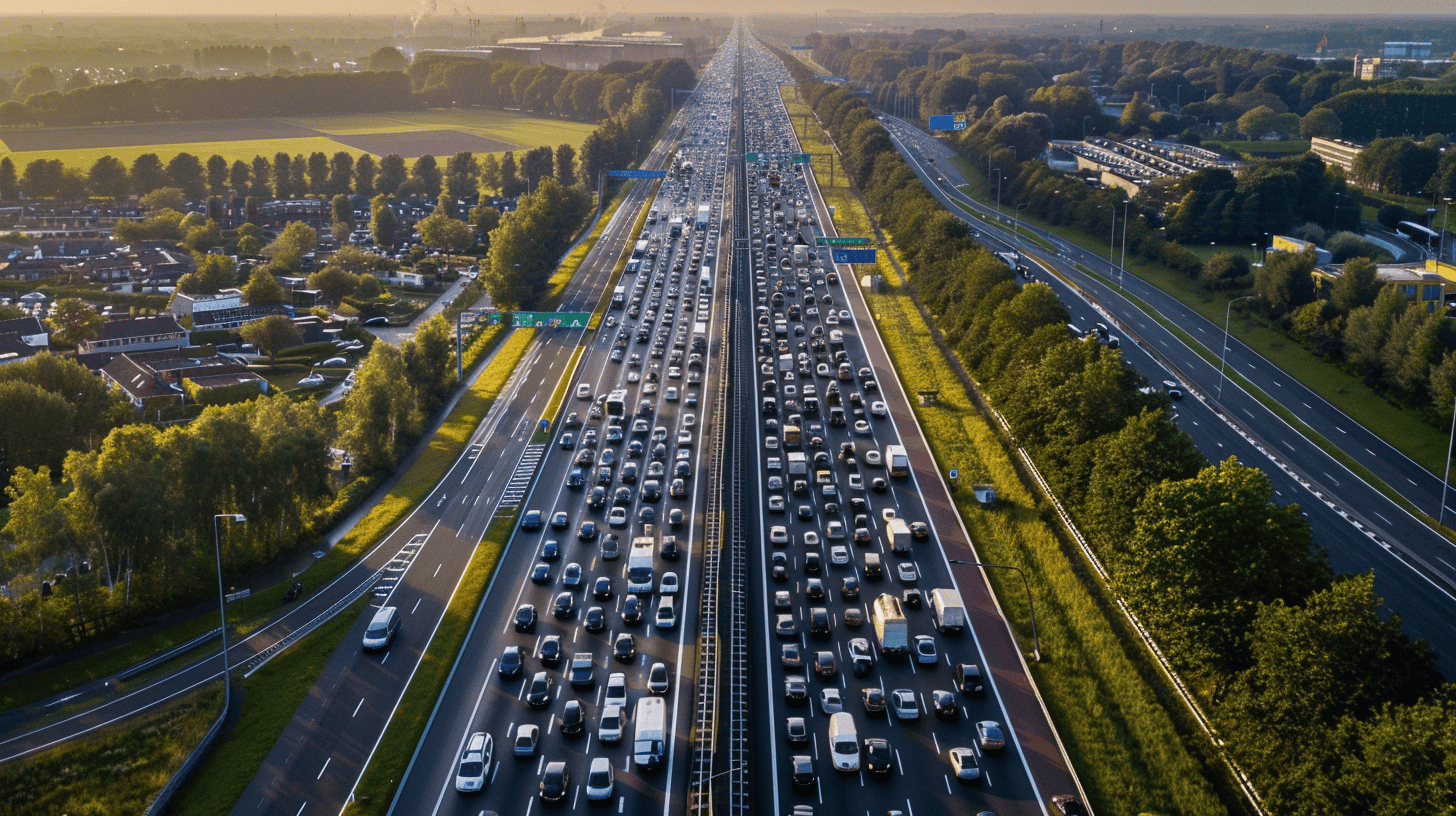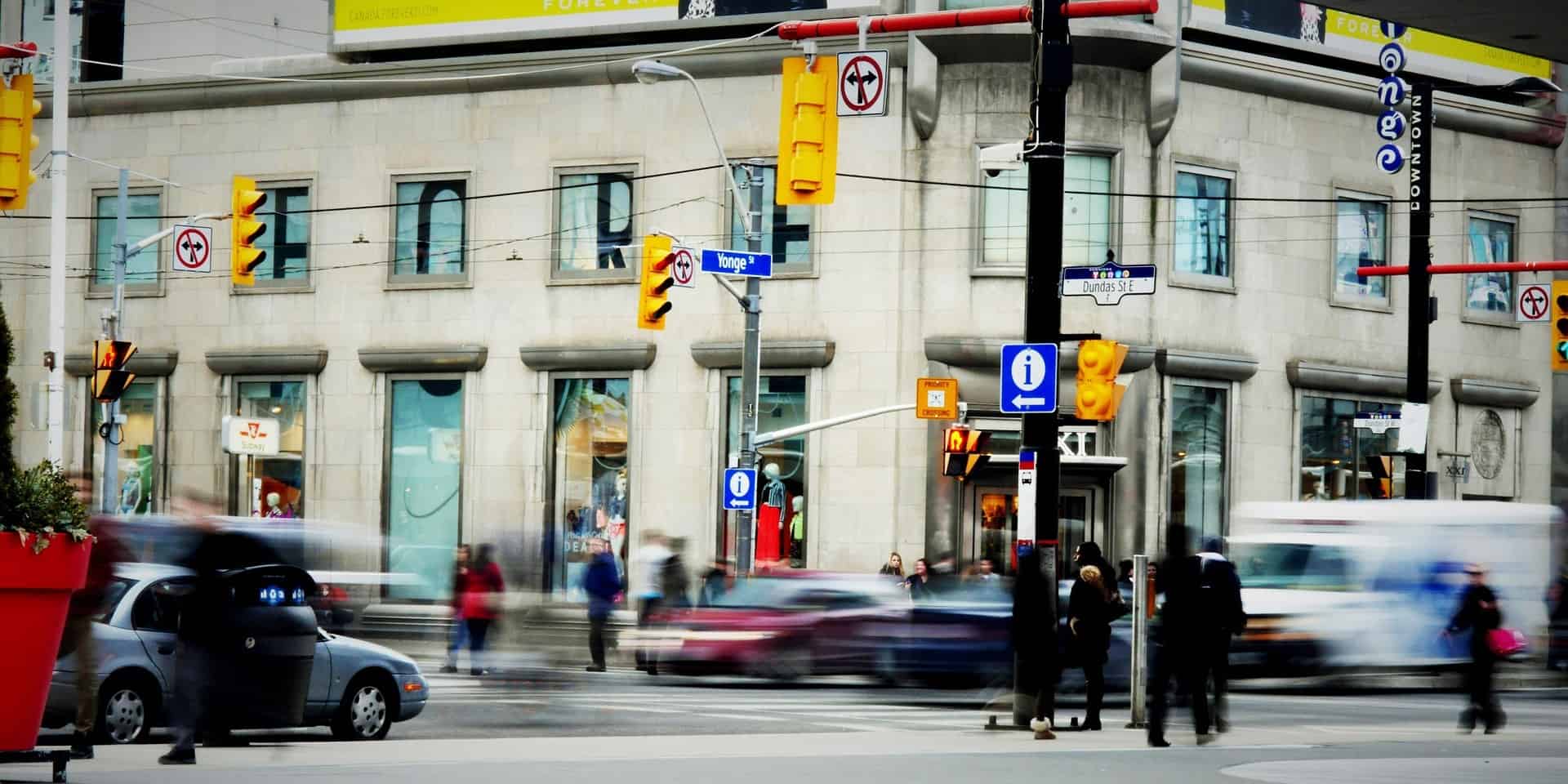
On Monday morning, a 7.5-kilometer-long traffic jam formed along the A12, the highway connecting Utrecht to The Hague. Planned construction work was the cause – Rijkswaterstaat expects more frequent delays in the coming period. This is not an exception. The A2 – which crosses the country from north to south – is the most pressing example. According to ANWB figures, traffic congestion increased in most provinces in 2023 compared to 2022. In the busiest provinces of South Holland and North Brabant, congestion severity grew by 18 and 22%, and in North Holland, by as much as 28%. Fortunately, real-time data and AI solutions are coming to the rescue.
Why this is important:
Traffic jams are ever present along Dutch highways. These innovations can help manage them better.
Real-time data to the rescue
Real-time data analysis can help manage urban traffic. Hamburg, Germany, collaborates with Workplace Solutions and PTV Group to incorporate software that provides live traffic data and predictive congestion models. This approach not only alleviates current congestion but also helps forecast and manage future disruptions, ensuring smoother journeys for road users.
Similarly, Belgium’s Mobilidata project is set to revolutionize traffic management in Flanders by integrating data from multiple sources. This includes intelligent traffic lights that adapt to real-time conditions, offering benefits like extended green phases for cyclists during inclement weather or prioritizing ambulances. The project’s 31 use cases demonstrate the diverse applications of data in optimizing traffic flow.

AI: The intelligent traffic conductor
AI is rapidly becoming the conductor of urban traffic orchestration. Jakarta’s implementation of an AI-powered smart traffic light system significantly improved its global congestion ranking from 46th to 29th in just one year. Istanbul also uses AI with analytics to manage its notorious traffic woes, tailoring public transport and accident response strategies to real-time conditions.
AI is not confined to vehicles; it extends to the very infrastructure of traffic management. As part of Mobilidata’s suite of innovations, intelligent traffic lights respond to immediate traffic conditions and integrate with emergency services and public transport to ensure a more efficient flow. This synchronization of urban movement extends beyond traffic; it enhances the overall safety and environmental quality of cities.
From sensors to smart solutions
Internet of Things (IoT) sensors are also critical as they provide the data necessary for effective AI analysis. These sensors monitor and report real-time traffic conditions, allowing for dynamic adjustments to the flow of vehicles. This technology is central to Istanbul’s traffic management system, enabling rapid response to congestion and incidents.
In Japan, the ARTEMIS traffic monitoring system uses motion sensors to track vehicle flow and spacing, leading to a significant 40% reduction in morning traffic congestion across five intersections in Moscow. Mumbai is next in line to implement the system, anticipating similar benefits.
Addressing phantom traffic jams
One of the most intriguing developments in traffic management is the CIRCLES project, led by UC Berkeley, which targets the mysterious phenomenon known as phantom traffic jams. By using AI-powered vehicles and cruise control algorithms, the project has shown that it’s possible to influence the speed and behavior of surrounding cars, thereby smoothing traffic flow and saving energy. The success of their real-world experiment on US Interstate 24 is a harbinger of the widespread adoption of such technologies, promising a future where such inefficiencies are a thing of the past.
As urban areas continue to expand and evolve, the need for efficient traffic management becomes ever more pressing. The initiatives described here are just the tip of the iceberg. With the continued integration of AI and smart technologies, we can look forward to a future where getting from A to B in the city is no longer a stressful, time-consuming ordeal but a seamless and perhaps even enjoyable experience.


